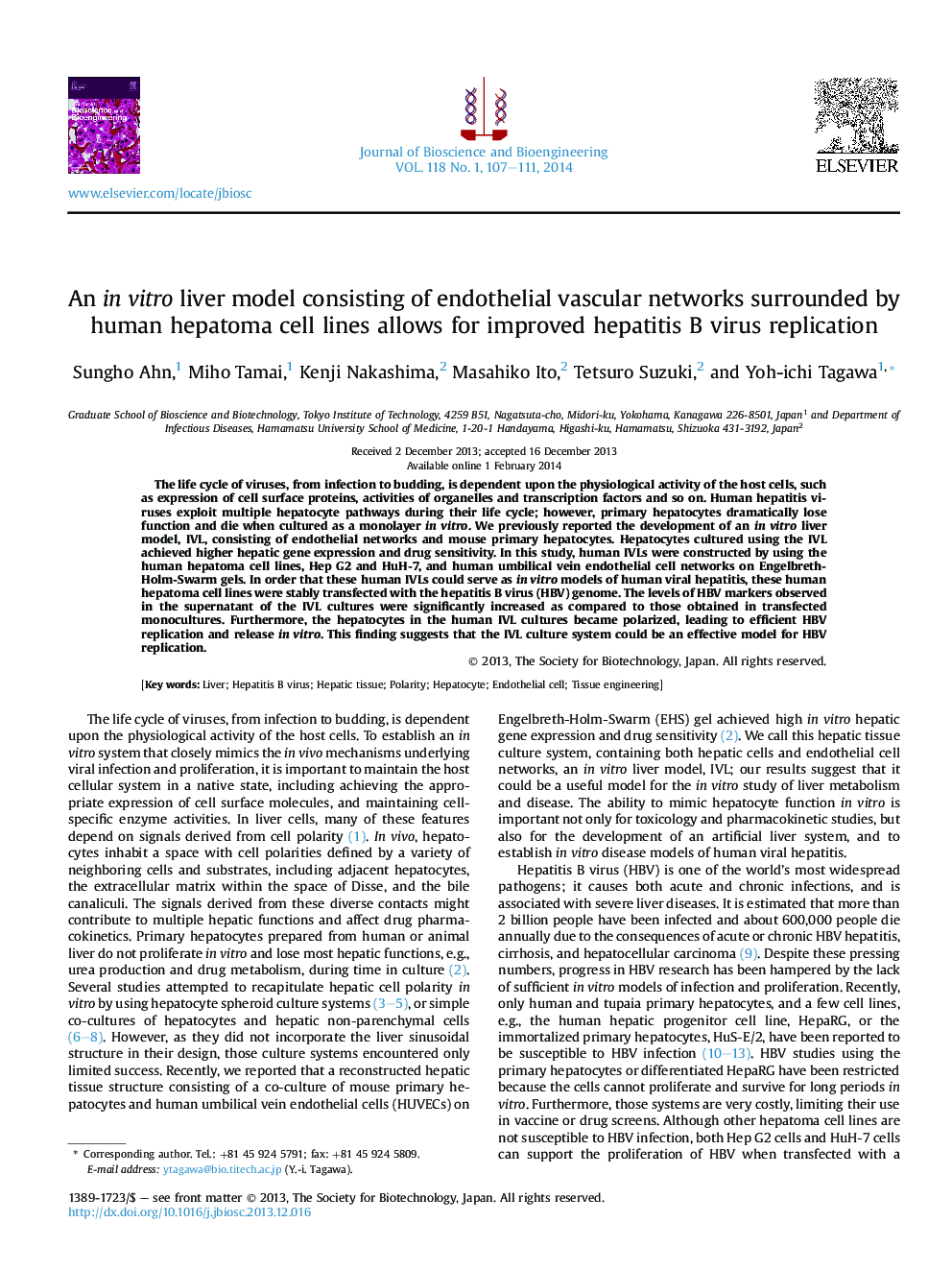| کد مقاله | کد نشریه | سال انتشار | مقاله انگلیسی | نسخه تمام متن |
|---|---|---|---|---|
| 20544 | 43179 | 2014 | 5 صفحه PDF | دانلود رایگان |

The life cycle of viruses, from infection to budding, is dependent upon the physiological activity of the host cells, such as expression of cell surface proteins, activities of organelles and transcription factors and so on. Human hepatitis viruses exploit multiple hepatocyte pathways during their life cycle; however, primary hepatocytes dramatically lose function and die when cultured as a monolayer in vitro. We previously reported the development of an in vitro liver model, IVL, consisting of endothelial networks and mouse primary hepatocytes. Hepatocytes cultured using the IVL achieved higher hepatic gene expression and drug sensitivity. In this study, human IVLs were constructed by using the human hepatoma cell lines, Hep G2 and HuH-7, and human umbilical vein endothelial cell networks on Engelbreth-Holm-Swarm gels. In order that these human IVLs could serve as in vitro models of human viral hepatitis, these human hepatoma cell lines were stably transfected with the hepatitis B virus (HBV) genome. The levels of HBV markers observed in the supernatant of the IVL cultures were significantly increased as compared to those obtained in transfected monocultures. Furthermore, the hepatocytes in the human IVL cultures became polarized, leading to efficient HBV replication and release in vitro. This finding suggests that the IVL culture system could be an effective model for HBV replication.
Journal: Journal of Bioscience and Bioengineering - Volume 118, Issue 1, July 2014, Pages 107–111